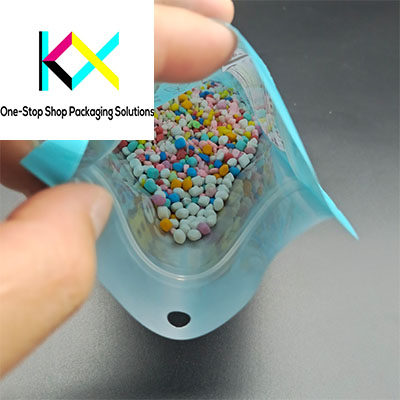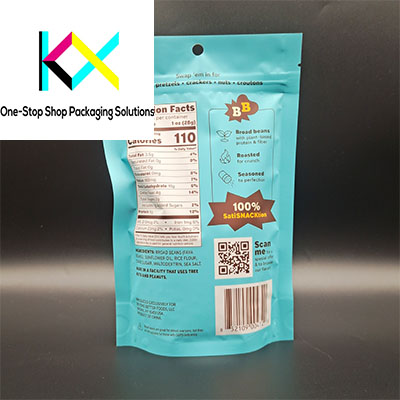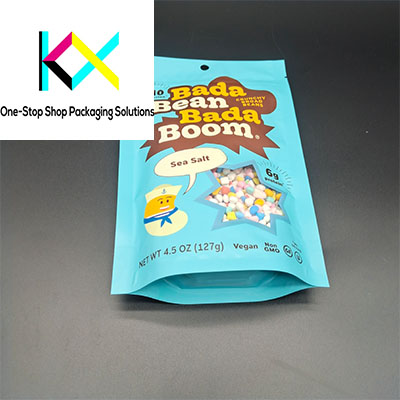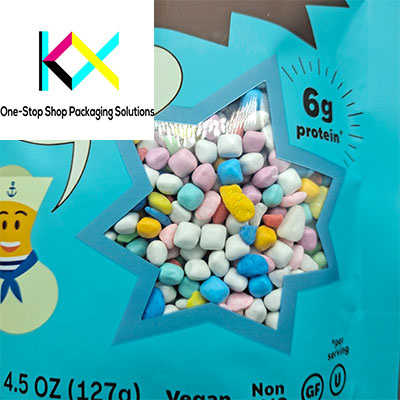How Pharmaceutical Packaging Ensures Medication Integrity
In the highly regulated world of healthcare, Pharmaceutical Packaging serves as the first line of defense in protecting medication efficacy and patient safety. This specialized field has evolved into a sophisticated discipline that combines material science, engineering precision, and regulatory compliance to create solutions that maintain product stability from manufacturing through patient use. Modern Pharmaceutical Packaging must address multiple challenges including moisture protection, light sensitivity, child resistance, and senior-friendly access while ensuring compliance with global regulatory standards. The continuous innovation in Pharmaceutical Packaging reflects the industry’s commitment to delivering medications in optimal condition, ultimately supporting positive therapeutic outcomes and maintaining public health standards.

The Convenience Factor: Advancements in Reseal Bag Technology
While primary containers protect individual doses, Reseal Bags provide practical solutions for multi-use products and combination therapies. These versatile packages have evolved significantly from simple zip-closure bags to sophisticated systems that maintain product integrity through multiple openings and closings. Modern Reseal Bags incorporate advanced sealing technologies that create reliable barriers against moisture, oxygen, and contaminants while remaining easy to operate for patients with varying physical abilities. The development of these bags represents an important intersection of patient convenience and product protection, particularly for medications requiring dosage flexibility or those dispensed in multi-use formats.


Material Innovations: Enhancing Protection and Sustainability
Recent advancements in material science are transforming both primary and secondary packaging solutions. For Pharmaceutical Packaging, developments include high-barrier films with improved moisture protection, anti-counterfeiting features integrated into material substrates, and temperature-sensitive indicators that monitor storage conditions. The industry is also making significant progress in sustainable materials, with innovations in recyclable mono-materials that maintain required barrier properties while addressing environmental concerns. Similarly, Reseal Bags are benefiting from material improvements including stronger seal layers, enhanced clarity for content visibility, and materials that maintain flexibility in various climate conditions without compromising protective qualities.

Patient-Centric Design: Improving Medication Adherence
The human factor represents a critical consideration in modern packaging development. Pharmaceutical Packaging increasingly incorporates features that support proper medication use, including clear labeling, intuitive opening sequences, and compliance aids that help patients track their dosage schedules. For packages intended for chronic conditions, designs often include large print, tactile features for visually impaired users, and easy-to-handle formats for those with limited dexterity. Reseal Bags contribute to patient convenience through features like writeable surfaces for tracking opening dates, tear-notches for easy access, and closure systems that provide audible confirmation of proper sealing.
Regulatory Compliance and Global Standards
The development and manufacturing of Pharmaceutical Packaging occurs within a complex framework of international regulations and quality standards. Packaging must demonstrate compliance with requirements for material safety, stability testing, and performance characteristics under various environmental conditions. Recent regulatory emphasis has included increased focus on serialization for track-and-trace requirements, standardized testing protocols for child-resistant features, and guidelines for environmental impact reduction. Manufacturers of Reseal Bags must ensure their products meet relevant food and drug contact regulations while maintaining functional performance throughout the product’s intended shelf life.
Smart Packaging Integration: The Digital Revolution
Technology integration is creating new possibilities for both safety monitoring and patient engagement. Advanced Pharmaceutical Packaging now incorporates smart elements such as NFC chips that connect to mobile applications, temperature sensors that record storage conditions, and time-stamp indicators that track first opening. These technologies provide valuable data to manufacturers, healthcare providers, and patients while enhancing medication safety. For Reseal Bags, smart features include integrity indicators that show if the package has been compromised, QR codes linking to product information and usage videos, and interactive elements that support proper medication management.
Sustainability Initiatives in Pharmaceutical Packaging
Environmental considerations are increasingly influencing packaging decisions across the healthcare sector. Pharmaceutical Packaging manufacturers are addressing sustainability through multiple approaches: reducing material usage through optimized design, developing recyclable material options where patient safety allows, and implementing take-back programs for specific packaging types. The industry is also exploring reusable systems for certain medication categories and developing guidelines for proper consumer disposal of medication packaging. For Reseal Bags, sustainability efforts focus on materials that maintain protective properties while supporting circular economy principles through recyclability or compostability where appropriate.
Future Directions: Personalized and Connected Solutions
The future of medication packaging points toward increasingly personalized and connected solutions. Pharmaceutical Packaging will likely evolve to support individualized dosing regimens, incorporate more sophisticated monitoring capabilities, and provide enhanced connectivity to healthcare systems. Developments in materials science may yield packages that actively modify their barrier properties in response to environmental conditions or provide real-time stability information. For Reseal Bags, future innovations may include integrated drying agents for moisture-sensitive products, smart labels that track reopening patterns for adherence monitoring, and materials that provide enhanced protection for increasingly complex drug formulations.
Conclusion: The Evolving Role of Packaging in Healthcare Delivery
The continuous innovation in Pharmaceutical Packaging demonstrates its critical role in modern healthcare delivery. From primary containers that ensure product stability to practical Reseal Bags that support patient convenience, packaging solutions have evolved to address complex challenges while maintaining focus on patient safety and therapeutic outcomes. As medications become more sophisticated and healthcare delivery models continue to evolve, packaging will play an increasingly important role in ensuring that patients receive their treatments in optimal condition and can use them safely and effectively. Through ongoing collaboration between packaging manufacturers, pharmaceutical companies, healthcare providers, and regulators, the industry will continue to develop solutions that protect product integrity, support patient needs, and contribute to better health outcomes.

You can visit our website to know more about our flexible packaging pouch:
